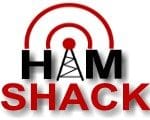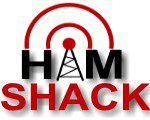
question specific learning
Transforming Knowledge Into Understanding
Discover the Free Advanced Amateur Radio Course from Hamshack.ca, optimized for mobile learning and utilizing the proprietary QSL (Question Specific Learning) method. This cutting-edge course is specifically designed for licensed amateurs aiming to upgrade from Basic or Basic with Honours certification, offering a unique learning experience that delves into the ‘why’ behind each answer, promoting quicker comprehension and longer retention of knowledge. The course is mobile-friendly and includes visual aids, comprehensive quizzes, and exams to ensure a thorough understanding of advanced amateur radio concepts. With free unlimited access for hamshack.ca account holders, it’s the perfect opportunity for learners to enhance their advanced amateur radio knowledge. Join the community of learners who are finding the course transformative in demystifying complex technical concepts. Enroll today and take the first step towards acing your Advanced Amateur Radio exam. Ham radio clubs are welcome to incorporate the QSL Advanced course into their educational programs for a nominal per user fee, offering a cost-effective solution to enhance training for their members. Contact VE7DXE to get started today.
Log into your hamshack.ca account to access the QSL Advanced Course. Don’t have an account? No problem, request an account here. Good luck with your studies!
How it Works
- Sign-up for the Course
- Study the QSL Course Content
- Take the QSL Practice Exam
- Find an Examiner
- Write the Advanced Exam
- Pass the Exam and Have Fun!
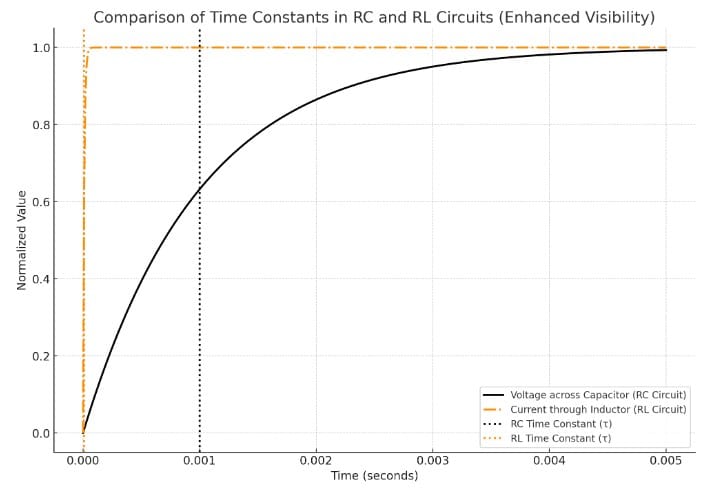
1.1. time constant – capacitive and inductive
Hamshack.ca’s “Time Constant – Capacitive and Inductive” course, within the Advanced Theory section, targets individuals aiming for an Advanced Licence. Using the Question Specific Learning (QSL) method, this course delves into radio technology for those with Basic licences, readying them for the Advanced Written exam. It combines detailed explanations and practical examples to enhance understanding and application skills in radio setup, focusing on theory integration with real-world use. It prepares amateur radio operators with crucial skills in signal processing and frequency tuning, enriching their hobby.

1.2. electrostatic and electromagnetic fields, skin effect
Hamshack.ca’s “Electrostatic and Electromagnetic Fields, Skin Effect” course, part of the Advanced Theory section, readies learners for the Advanced Written exam. It delves into essential electronics principles crucial for ham radio mastery, focusing on electrostatic and electromagnetic fields and the skin effect’s impact on RF currents. Utilizing the Question Specific Learning (QSL) method, the course not only prepares students for the exam but also equips them with practical skills by linking theory to real-world applications, enhancing operator skills and equipment performance.
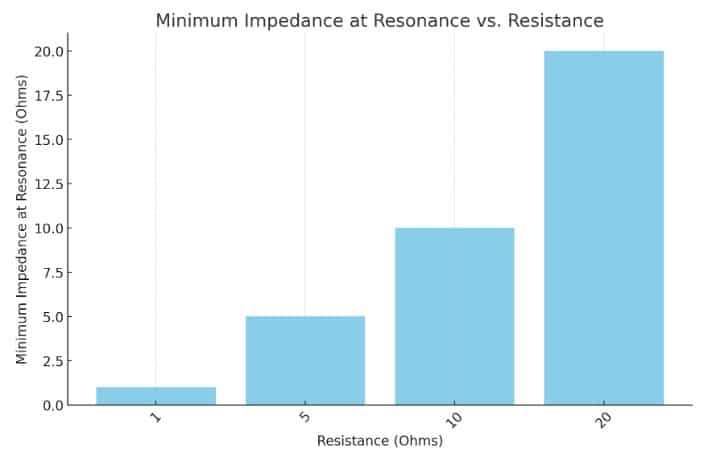
1.3. series-resonance
Hamshack.ca’s “Series-Resonance” course, within the Advanced Theory section, delves into RLC circuit resonance, essential for amateur radio and RF engineering mastery. It covers resonant frequency principles, tuning, and component variations, offering insights for radio frequency optimization. The course focuses on balancing reactances to reduce impedance, precise circuit tuning, and component value calculations for specific resonances. Aimed at preparing for the Advanced Written exam, it combines theory with practical applications in amateur radio through the Question Specific Learning (QSL) method, enhancing both understanding and operational skills.

1.4 parallel resonance
The “Parallel Resonance in RLC Circuits” chapter from Hamshack.ca’s Advanced Theory section focuses on calculating resonant frequencies in parallel RLC circuits, key for RF engineering and amateur radio. It explores how inductance and capacitance changes influence resonant frequencies, emphasizing the balance between inductive and capacitive reactances that leads to parallel resonance. This phenomenon, crucial for tuning circuits, frequency amplification, and signal filtering, demonstrates the importance of precise component values. Through the Question Specific Learning (QSL) approach, learners gain practical insights into circuit tuning and design for achieving specific operational frequencies.

1.5 quality factor (Q)
Hamshack.ca is changing Amateur Radio education with its cutting-edge Question Specific Learning (QSL) methodology, showcased in courses like the ‘Quality Factor (Q)‘. This course, the last of the five in the Advanced Theory section, is tailored for those seeking an Advanced Licence, providing a thorough exploration of the Quality Factor and its significance in circuit performance. It delves into resonance, bandwidth, and selectivity, illustrating these concepts through practical examples. The QSL method, exclusive to Hamshack.ca, encourages a shift from rote memorization to a profound comprehension, leveraging detailed explanations and real-life scenarios from the Spectrum Management Question bank. This innovative approach not only aids in exam preparation but also furnishes learners with the necessary capabilities to design, optimize, and troubleshoot efficient radio communication systems, thereby redefining the standards of Amateur Radio education.

2.1. germanium, silicon, gallium arsenide, doping, P-type, N-type
Hamshack.ca extends its innovative Question Specific Learning (QSL) methodology to the ‘Germanium, Silicon, Gallium Arsenide, Doping, P-type, N-type‘ course, the first in the Advanced Components and Circuits section. This chapter offers a deep dive into the properties and applications of key semiconductors: germanium, silicon, and gallium arsenide, along with an exploration of the doping process and the differentiation into P-type and N-type materials. These semiconductors are crucial for their distinctive ability to conduct electricity under specific conditions while acting as insulators under others, a feature essential for manufacturing diodes, transistors, and integrated circuits. Through the QSL approach, Hamshack.ca fosters a transition from mere memorization to a profound understanding, using detailed explanations and real-life examples. This course not only prepares learners for advanced examinations but also equips them with the knowledge to innovate and optimize in the field of electronics, significantly impacting the development and functionality of modern electronic devices.

2.10. digital logic elements
The ‘2.10 Digital Logic Elements‘ course, a crucial component of the Advanced Components and Circuits section at Hamshack.ca, employs the Question Specific Learning (QSL) methodology to cover the essential aspects of digital electronics — logic gates and circuits. This chapter is vital for anyone involved in ham radio and electronics, as it lays the groundwork for understanding digital communication and processing systems. It comprehensively explores the functionalities and characteristics of various logic gates including NAND, OR, NOR, NOT, EXCLUSIVE OR, EXCLUSIVE NOR, and AND gates, as well as flip-flops, bistable multivibrators, latches, and the role of transistors in multivibrator circuits. Each component is discussed for its specific utility and features that are indispensable for designing complex digital systems. By concluding this chapter, learners will achieve a solid foundation in digital logic, enabling them to apply this knowledge in the development and optimization of electronic devices and systems across a range of applications.
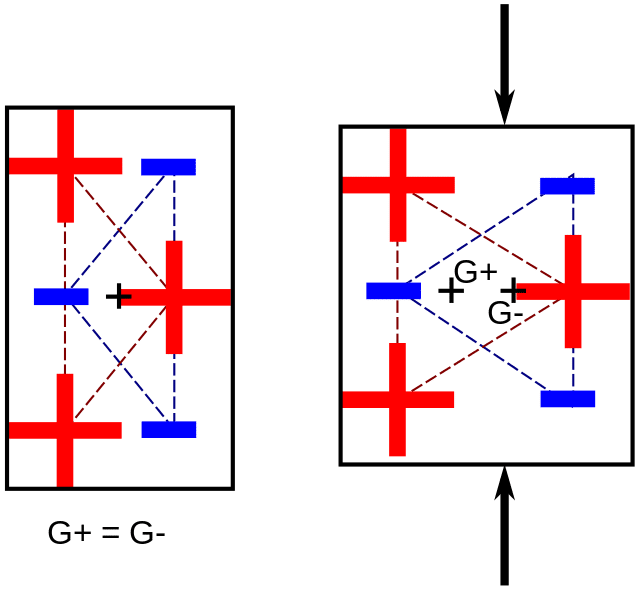
2.11. quartz crystal – properties and applications
The ‘2.11 Quartz Crystal – Properties and Applications‘ course, part of the Advanced Components and Circuits section at Hamshack.ca, is designed using the Question Specific Learning (QSL) approach to illuminate the critical role of quartz crystals in radio communication technology. This chapter ventures into the detailed study of crystals, focusing on their application in various crystal-based components like lattice filters and oscillators within radio systems. It covers the operational principles of crystal lattice filters, the piezoelectric effect, and the distinctive properties of crystals that are essential for oscillator circuits. By diving into these topics, learners will understand how crystals ensure frequency stability, enhance signal filtering, and improve the efficiency of radio communication devices. This course is indispensable for those keen on mastering the technical facets of radio communications and employing crystal technology in electronic circuit designs, providing a comprehensive foundation for advancing in the field of modern radio communications.

2.12. advanced filter circuits – AF, RF
The ‘2.12 Advanced Filter Circuits – AF, RF‘ course, concluding the Advanced Components and Circuits section at Hamshack.ca, incorporates the Question Specific Learning (QSL) methodology to explore the complex world of filter circuits in audio frequency (AF) and radio frequency (RF) applications. This chapter introduces the fundamental types of filters—high-pass, low-pass, and band-pass—before diving into the specifics of advanced filters like Butterworth and Chebyshev. It provides a detailed look at resonant cavities, coaxial cavities, and helical resonators, elucidating their importance in achieving signal purity and optimizing system performance. Further, the course emphasizes the necessity of understanding filter behavior across a spectrum of frequencies, from audio to VHF and higher, enabling both enthusiasts and professionals to select and apply filters knowledgeably in various electronic and communication systems. This comprehensive coverage ensures learners are well-equipped to tackle challenges in filtering and signal processing, marking a significant step forward in their journey through modern radio communications.

2.2 diodes – point-contact, junction, hot-carrier, Zener
Hamshack.ca leverages its Question Specific Learning (QSL) methodology in the ‘2.2 Diodes – Point-Contact, Junction, Hot-Carrier, Zener‘ course, an integral component of the Advanced Components and Circuits section. This course offers an in-depth look at the fundamental role diodes play in ham radio systems, focusing on the properties, applications, and unique functions of Zener, varactor, Schottky, and junction diodes. It highlights how each diode type contributes to the stability, precision, and efficiency of ham radio circuits, with applications ranging from voltage stabilization to frequency tuning and power management. The QSL format, distinctive to Hamshack.ca, emphasizes a deep understanding through a blend of detailed explanations, real-life examples, and direct application of concepts derived from the Spectrum Management Question bank. This educational approach not only aids in preparing for advanced examinations but also in acquiring the practical skills needed for the design and optimization of electronic circuits, ensuring a comprehensive mastery over diode technology and its applications in ham radio.

2.3. transistors – NPN/PNP
Hamshack.ca’s Question Specific Learning (QSL) methodology is showcased in the ‘2.3 Transistors – NPN/PNP‘ course, a crucial part of the Advanced Components and Circuits section. This course delves into the complex world of transistors, the cornerstone components that have transformed electronics and the field of ham radio. It offers a comprehensive exploration of NPN and PNP transistors, detailing critical parameters like alpha and beta that influence their operation and efficacy. Through this course, learners will gain an in-depth understanding of how these small yet powerful semiconductors amplify and switch signals, highlighting their essential role in circuits. By examining the current flow in various configurations and the interplay between key parameters, the course provides a thorough insight into the mechanics that position transistors as the foundation of contemporary electronic devices and communication systems. Utilizing the QSL format, Hamshack.ca ensures a profound comprehension through detailed explanations, practical examples, and direct application of concepts, equipping students with the knowledge and skills to innovate and optimize in electronics, particularly in ham radio.
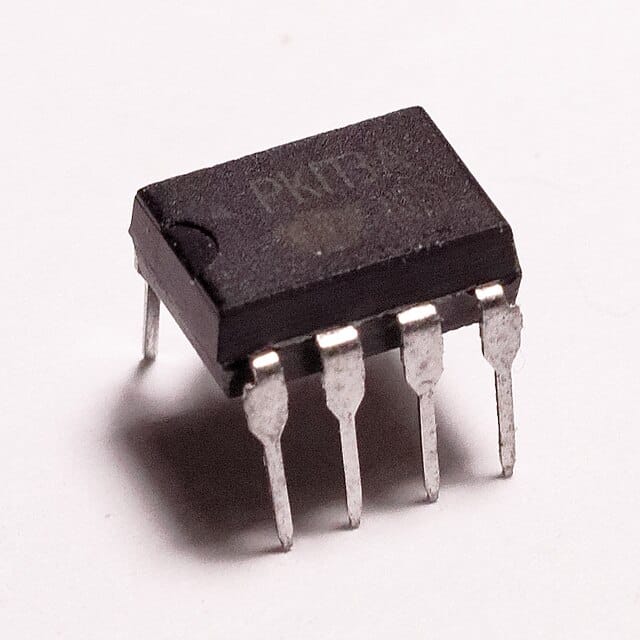
2.4. field effect transistor (FET), JFET, MOSFET
In the ‘2.4 Field Effect Transistor (FET), JFET, MOSFET‘ course, part of the Advanced Components and Circuits section, Hamshack.ca applies its Question Specific Learning (QSL) methodology to navigate the complex world of Field-Effect Transistors (FETs). This pivotal course in electronics and ham radio technology offers a deep dive into the characteristics and operational modes of FETs, including JFETs and MOSFETs, covering both enhancement and depletion modes. It thoroughly examines the structure, conduction mechanisms, and necessary protective measures for these transistors, providing essential knowledge for understanding their critical functions in amplification, switching, and signal modulation within modern electronic circuits. Through the QSL format, learners are guided towards a comprehensive understanding of FETs, bolstering their ability to engage with the intricacies of contemporary electronics, with a particular focus on ham radio applications. This approach ensures a deep comprehension of the material, equipping students with the skills needed to design, optimize, and troubleshoot advanced electronic systems.

2.5. silicon-controlled rectifiers (SCR)
In the ‘2.5 Silicon-Controlled Rectifiers (SCR)‘ course, integral to the Advanced Components and Circuits section, Hamshack.ca employs its Question Specific Learning (QSL) methodology to uncover the essentials of Silicon-Controlled Rectifiers (SCRs). This course illuminates the critical role SCRs play in electronics and ham radio technology, focusing on their basic principles, structural design, and operational mechanics. Learners are introduced to the three-terminal configuration of SCRs: anode, cathode, and gate, and guided through their binary operation modes—conducting and non-conducting states. The course further compares SCRs to similar semiconductor devices, such as junction diodes, highlighting their functionality when activated. By examining the diverse types and uses of SCRs, participants will understand their significance in controlled rectification, power regulation, and overvoltage protection. This exploration is crucial for anyone aiming to master the construction of durable and efficient ham radio systems. Through the QSL approach, the course ensures a thorough comprehension of SCRs, preparing students to innovate and enhance the electronics at the heart of modern communication systems.
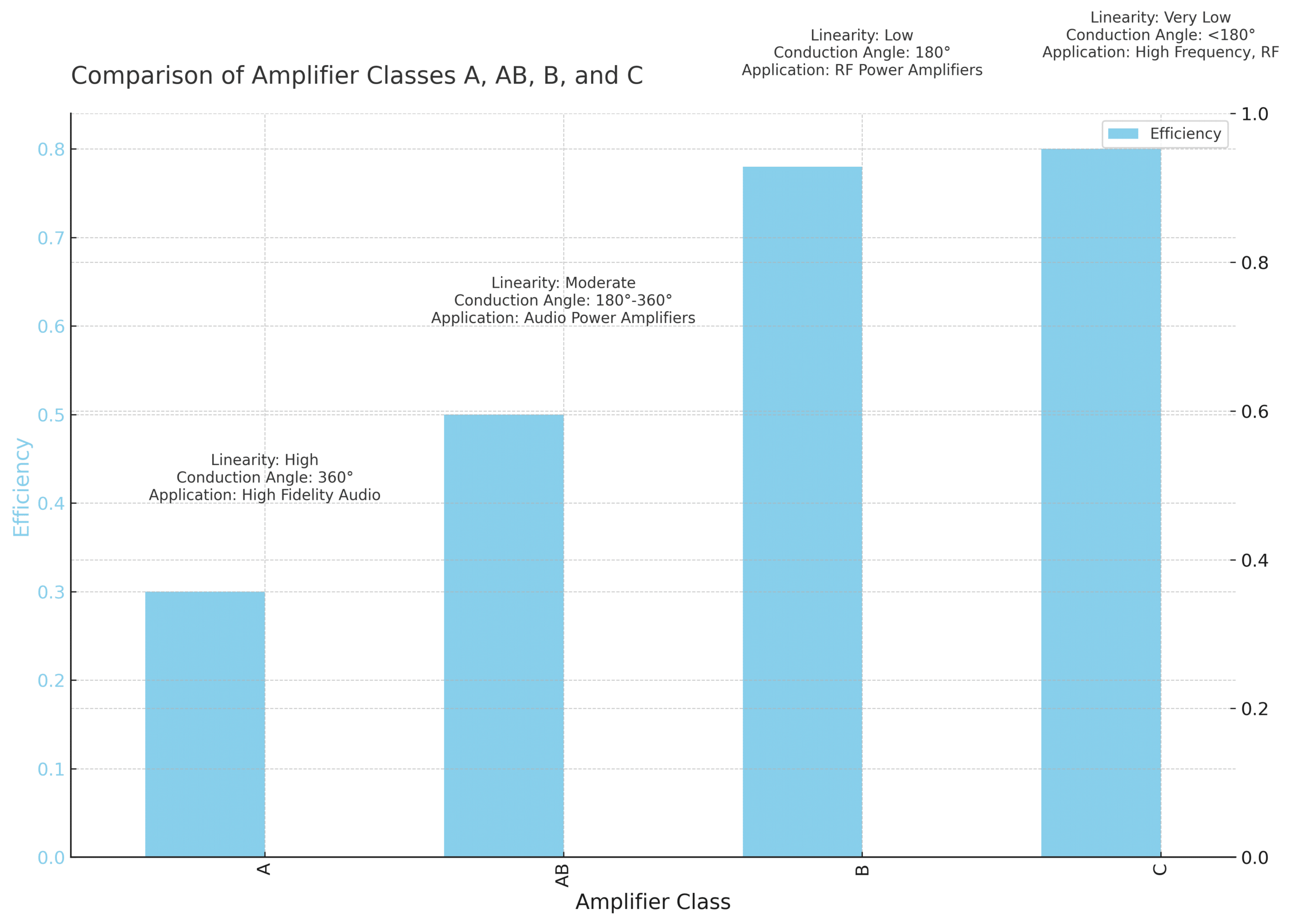
2.6. Amplifiers – Classes A, AB, B, and C
The ‘2.6 Amplifiers – Classes A, AB, B, and C‘ course, a key part of the Advanced Components and Circuits section at Hamshack.ca, adopts the Question Specific Learning (QSL) methodology to delve into the spectrum of amplifier classes used in ham radio technology. This chapter offers a comprehensive look at Class A, B, AB, and C amplifiers, outlining their unique operational characteristics, efficiency, and roles in radio communication. Class A amplifiers are highlighted for their high fidelity and constant operation, making them ideal for applications demanding superior sound quality. Conversely, Class B and AB amplifiers strike a balance between efficiency and audio performance, suitable for a broad range of uses. Class C amplifiers, noted for their high efficiency but limited by their distortion, are primarily used in specific RF contexts. Gaining an understanding of these various amplifier classes is crucial for anyone engaged in ham radio, as they play a pivotal role in influencing transmission quality and the overall efficiency of the system. Through the QSL framework, learners are equipped with the knowledge to navigate the complexities of amplifiers, enhancing their ability to design and optimize radio communication systems.
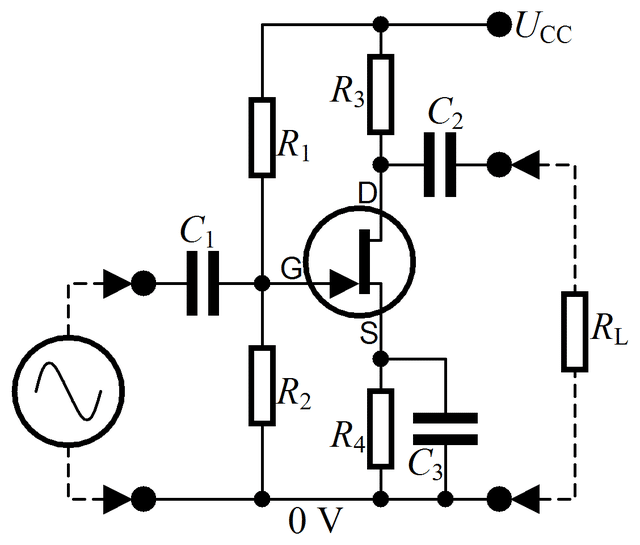
2.7. amplifier circuits – discrete and IC
The ‘2.7 Amplifier Circuits – Discrete and IC‘ course, within Hamshack.ca’s Advanced Components and Circuits section, leverages the Question Specific Learning (QSL) methodology to enhance understanding of amplifier configurations using discrete components and integrated circuits (ICs). This chapter focuses on Field-Effect Transistors (FETs) and bipolar transistors, exploring configurations such as common-source, common-drain, common-gate, common-emitter, common-collector, and common-base amplifiers. It addresses key concepts like input and output impedance, phase relationships, and the analogies between FET and bipolar designs. This course equips learners with insights into why certain configurations are preferred for specific applications, their influence on signal processing, and their role in electronic circuits, providing a comprehensive foundation for optimizing amplifier circuit design in various technological applications.
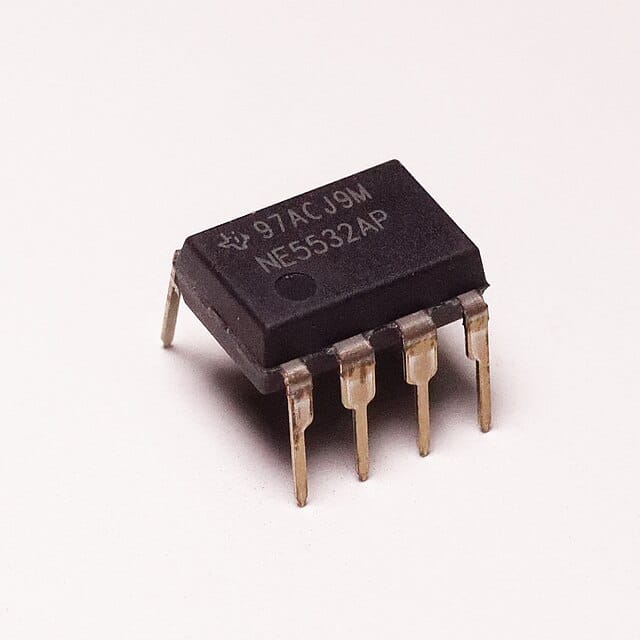
2.8. operational amplifiers, properties, and applications
The ‘2.8 Operational Amplifiers, Properties, and Applications‘ course, featured in the Advanced Components and Circuits section at Hamshack.ca, utilizes the Question Specific Learning (QSL) method to provide a thorough examination of operational amplifiers (op-amps) and their critical role in electronics. This chapter delves into the fundamental concepts of op-amps, detailing their ideal characteristics and operational principles across various configurations such as inverting and non-inverting setups. It also explores their applications in audio filters and signal processing. Through an exploration of key aspects like gain determination, offset voltage, and input/output impedance, learners will acquire a deep understanding of op-amps’ versatility and their indispensable function in amateur radio circuitry and a wide range of electronic devices, equipping them with the knowledge to innovate and improve electronic system designs.
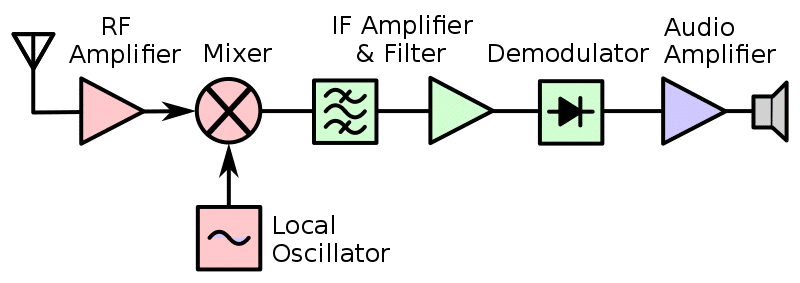
2.9. Mixers and Frequency Multipliers
The ‘2.9 Mixers and Frequency Multipliers‘ course, integral to the Advanced Components and Circuits section at Hamshack.ca, adopts the Question Specific Learning (QSL) approach to explore the fundamental components crucial for radio frequency (RF) systems—mixers and frequency multipliers. This chapter provides an in-depth look at the operational principles of mixers and frequency multipliers, highlighting their essential roles in altering signal frequencies for a myriad of RF applications, from basic signal processing to complex communication transceivers. It explains the mixing process, where two signals merge to produce sum and difference frequencies, vital for frequency translation in receivers and transmitters. Additionally, the course examines how frequency multipliers elevate signals to higher frequencies, enhancing communication signal range and effectiveness. Through comprehensive analysis and real-life examples, learners gain a thorough understanding of mixers and frequency multipliers, including design considerations and applications, laying a solid groundwork for advancing in amateur radio technology and preparing for the exam.
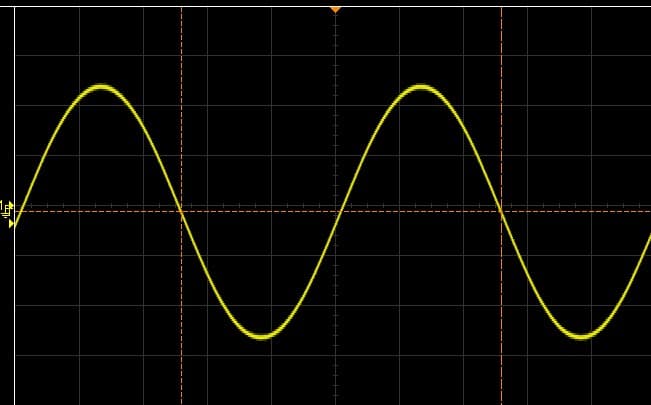
3.1. AC – peak, peak-to-peak, average, RMS
The ‘3.1 AC – peak, peak-to-peak, average, RMS‘ course, the first course of the Measurements section at Hamshack.ca, utilizes the Question Specific Learning (QSL) method to demystify the principles of alternating current (AC) measurements, an essential topic for those in electrical engineering and electronics. This chapter focuses on the various amplitude dimensions of AC signals, including peak, peak-to-peak, average, and RMS (Root Mean Square) values, which are instrumental in the accurate analysis and interpretation of AC waveforms. Highlighting their practical application, the course discusses the calibration of AC voltmeters and the use of Ohm’s law in AC circuits. Through this exploration, learners acquire a thorough understanding of AC voltage and current measurement techniques, setting a solid groundwork for advancing in electronics and electrical system studies.
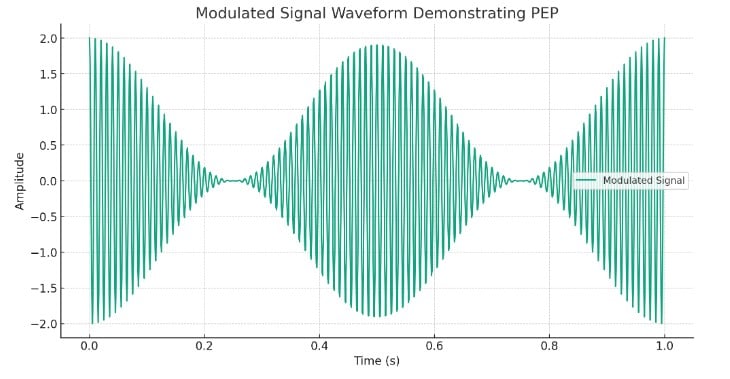
3.2 PEP, PEP relative to average power, PEP relative to the voltage across the load
The ‘3.2 PEP, PEP relative to average power, PEP relative to the voltage across the load‘ course, part of the Measurements section at Hamshack.ca, is crafted using the Question Specific Learning (QSL) approach to deepen the understanding of transmitter power dynamics in amateur radio operations. This chapter focuses on Peak-Envelope Power (PEP), a key metric for gauging the maximum power output of radio transmissions. It guides learners from basic amplitude measurements to intricate calculations of PEP in various scenarios, aiming to enhance the operator’s proficiency in accurate power assessment and adjustment. The course covers vital techniques for measuring voltage across dummy loads, translating peak-to-peak measurements to RMS values, and comprehending how these metrics influence transmission quality and compliance with regulations. By the conclusion of this chapter, amateur radio operators will possess a robust understanding of how to manage transmitter power effectively, ensuring their broadcasts are not only clear and efficient but also within the bounds of legal requirements. Through detailed exploration and practical examples, operators are equipped with essential skills for optimizing transmission performance and elevating their amateur radio practices.
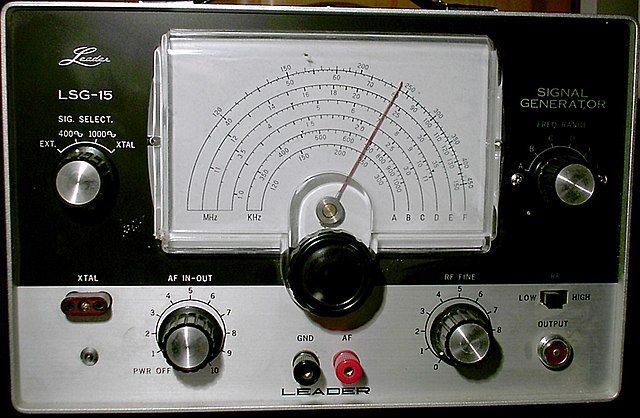
3.3. dip meters, signal generator
The ‘3.3 Dip Meters, Signal Generator‘ course, part of the Measurements section at Hamshack.ca, is designed with the Question Specific Learning (QSL) approach to demystify the use and significance of dip meters and signal generators in ham radio and electronics. This chapter provides a deep dive into the function and application of dip meters—variable frequency oscillators with metered feedback current—emphasizing their role in detecting resonant frequencies within circuits. It showcases the utility of dip meters in amateur radio setups for assessing resonant frequencies of antenna traps and tuned circuits. Furthermore, the course introduces signal generators as indispensable tools, acting as high-stability oscillators capable of emitting a wide range of frequencies and amplitudes, essential for the testing and calibration of electronic devices. By mastering the operational nuances of dip meters and signal generators, ham radio enthusiasts and electronics professionals can enhance their capability in precise measurement, testing, and adjustment of equipment, ensuring peak operational efficiency.
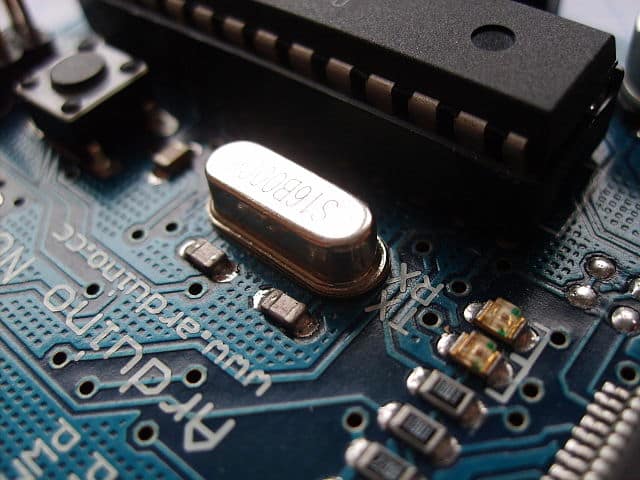
3.4. crystal calibrator, marking generator, frequency counter
The ‘3.4 Crystal Calibrators, Marking Generators, and Frequency Counters‘ course, a crucial installment in the Measurements section at Hamshack.ca, adopts the Question Specific Learning (QSL) methodology to explore essential tools for precision in ham radio operations. This chapter introduces learners to the critical roles of crystal calibrators, marking generators, and frequency counters in the realm of amateur radio, emphasizing their importance in frequency measurement and calibration. Crystal calibrators serve as steadfast frequency references, crucial for the verification and fine-tuning of radio equipment’s accuracy. Marking generators play a key role in the alignment and testing of receivers by providing marker signals at predetermined frequencies. Meanwhile, frequency counters are indispensable for accurately measuring electrical signal frequencies, ensuring operators stay within their allocated frequency bands and maintain effective communication. By understanding the functions and applications of these devices, amateur radio operators can achieve mastery in their craft, guaranteeing their equipment is precisely calibrated and operates at peak performance.

3.5. Oscilloscope
The ‘3.5 Oscilloscope‘ course, integral to the Measurements section at Hamshack.ca, leverages the Question Specific Learning (QSL) methodology to equip learners with the knowledge and skills to effectively use oscilloscopes in ham radio. This chapter underscores the importance of oscilloscopes for visualizing and analyzing electronic signals, allowing operators to delve into the waveform’s frequency, amplitude, and phase characteristics. It provides a comprehensive guide on interpreting oscilloscope readings, an essential skill for diagnosing equipment issues, aligning transmitters and receivers, and maintaining signal quality. Topics covered include reading Lissajous patterns, acknowledging oscilloscope accuracy limits, enhancing frequency response, and applying oscilloscope use in specific scenarios like signal quality assessments and phase difference evaluations. By understanding the functionalities and applications of oscilloscopes, amateur radio operators and electronics enthusiasts can improve their troubleshooting capabilities and ensure their equipment operates at optimal performance levels.
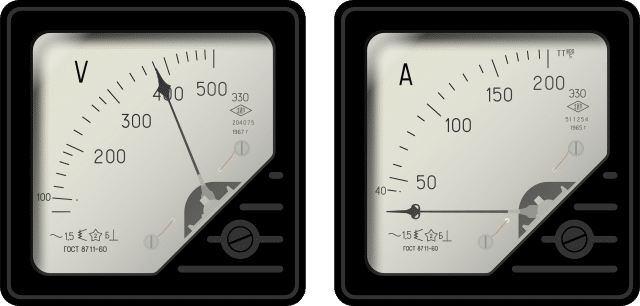
3.6. meters, multimeter, power meter
The ‘3.6 Meters, Multimeter, Power Meter‘ course, concluding the Measurements section at Hamshack.ca, incorporates the Question Specific Learning (QSL) approach to offer an in-depth examination of critical electrical measurement tools. This chapter zeroes in on meters, multimeters, and power meters, highlighting their indispensability in ham radio operations. It covers the principles of extending meter range using shunt and series resistors, the significance of ammeter and voltmeter sensitivity, and their application in accurately measuring current, voltage, and RF power. With a focus on both theoretical underpinnings and practical utility, the course aims to provide learners with a solid foundation in utilizing these instruments effectively across various settings. This ensures precise and dependable measurements, pivotal for achieving excellence in both amateur and professional radio communication environments. Through detailed explanations, real-world examples, and practical calculations, participants are empowered to master the use of these essential measurement tools, enhancing their technical skill set and operational efficiency in the field of electronics and radio communications.

4.1. transformer and rectifier circuits, voltage doubler circuit, PIPs
The ‘4.1 Transformer and Rectifier Circuits, Voltage Doubler Circuit, PIPs‘ course is the first in the Power Suppliers section at Hamshack.ca, employing the Question Specific Learning (QSL) strategy to dissect complex concepts essential in electrical and electronic engineering, with a special emphasis on ham radio applications. This chapter embarks on a comparative analysis of various rectifier types, including bridge, half-wave, and full-wave center-tap rectifiers, to identify the configuration that offers the highest average output voltage. It further examines the critical role of peak inverse voltage (PIV) in rectifier circuits, crucial for crafting dependable power supplies. The exploration extends to full-wave voltage doublers, highlighting their effectiveness in maximizing AC wave utilization. Additionally, the chapter brings measurement tools like dip meters into focus, underscoring their importance in the fine-tuning and troubleshooting of resonant circuits, as well as in ensuring the accuracy of frequency measurements. Through detailed discussions, real-life applications, and practical insights, this course is designed to enrich learners’ comprehension of foundational power supply concepts, fostering a deeper grasp of electronics and radio communication.
Hamshack.ca is transforming Amateur Radio education through its proprietary Question Specific Learning (QSL) method, used to deliver the Advanced Amateur Radio course, with the Basic and other courses to follow. This approach emphasizes understanding the reasoning behind correct answers with detailed explanations, real-life examples, and quizzes developed from the Spectrum Management Question bank. QSL aims to shift learning from simple memorization to thorough comprehension, preparing learners for practical application and the Spectrum Management formal written exams.
© The Question Specific Learning (QSL) method is a proprietary and copyrighted educational framework, exclusively developed by Hamshack.ca. For detailed information on usage rights and restrictions, please refer to the Hamshack.ca Terms of Use.
